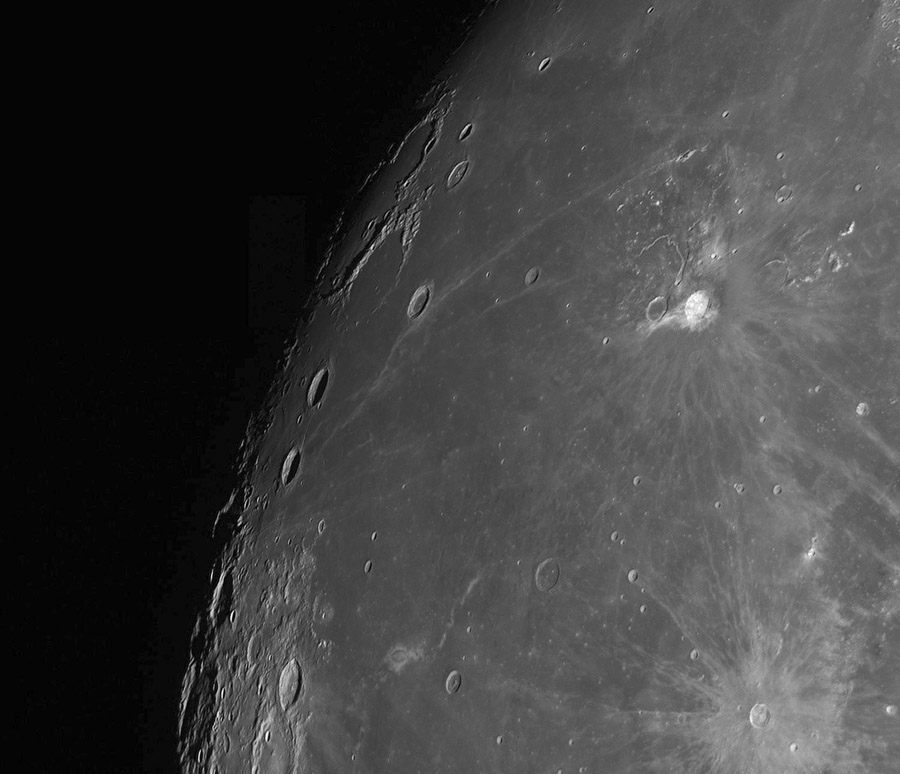Difference between revisions of "January 27, 2013"
| Line 12: | Line 12: | ||
01-25-2013, 19 h 30 UT. Mewlon 210 at focus. Mosaic of 4 images. DMK 31. Registax 6.<br /> | 01-25-2013, 19 h 30 UT. Mewlon 210 at focus. Mosaic of 4 images. DMK 31. Registax 6.<br /> | ||
<br /> | <br /> | ||
| + | <p><b>Yesterday's LPOD:</b> [[January 26, 2013|The Atlas Helps Public Outreach]] </p> | ||
| + | <p><b>Tomorrow's LPOD:</b> [[January 28, 2013|Your Destination?]] </p> | ||
<hr /> | <hr /> | ||
Revision as of 12:40, 7 February 2015
Northwest Story

image by Gérard Coute, France
I love this picture, not because this is the first I've done since a month, due to clouds. It’s because it tells us many stories – geological, historical, and astronautical. We are west of Procellarum, a hypothetical basin compared to well-defined ones. Northwest are three very old craters, Russell, Struve, and Eddington flooded by lavas. They face the young Aristarchus with its bright rays system; a shortcut of 3.5 billion years. Just south of Eddington are Krafft and Cardanus, two 50 km Upper Imbrian stratigraphic age craters linked by a chain of secondaries, Catena Krafft. Starting from Cardanus to Seleucus, is a bended bright ray ejected from Glushko. South of Krafft, is Planitia Descensus where Luna 9 landed February 3 1966. Just east is Galilaei, a so small crater for such a genius; Riccioli’s revenge. Following east is Reiner Gamma, a swirl associated with a strong magnetic field. Unfortunately Marius Hills are invisible, due to high Sun. But this high Sun allows us to see radiant Kepler’s bright rays system. At the end let’s go north and join Aristarchus Plateau, a very interesting and complex volcanic area. A nice trip, isn’t it?
Gérard Coute
Technical Details
01-25-2013, 19 h 30 UT. Mewlon 210 at focus. Mosaic of 4 images. DMK 31. Registax 6.
Yesterday's LPOD: The Atlas Helps Public Outreach
Tomorrow's LPOD: Your Destination?



